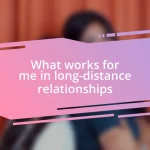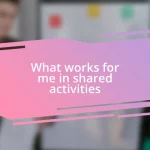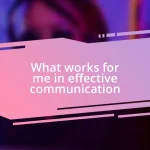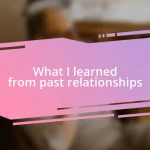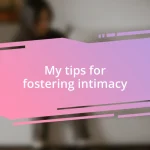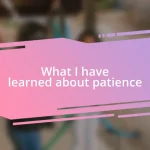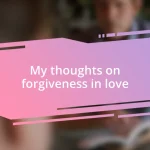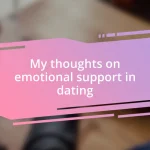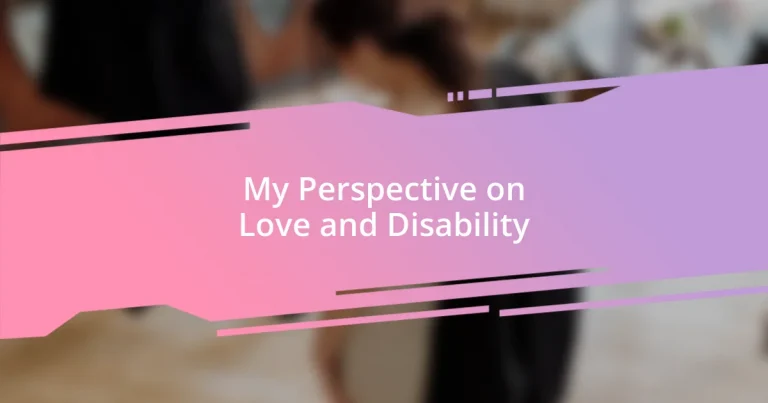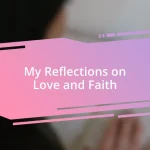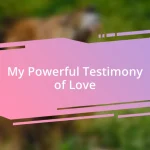Key takeaways:
- Love in the context of disability thrives on authenticity and open communication, creating deeper connections through shared experiences and understanding.
- Couples facing disabilities often empower each other by confronting societal stigmas together, showcasing resilience and strength through mutual support and vulnerability.
- Building a supportive partnership involves celebrating small victories, sharing joys, and maintaining a balance of empathy and happiness, enriching the relationship amidst challenges.
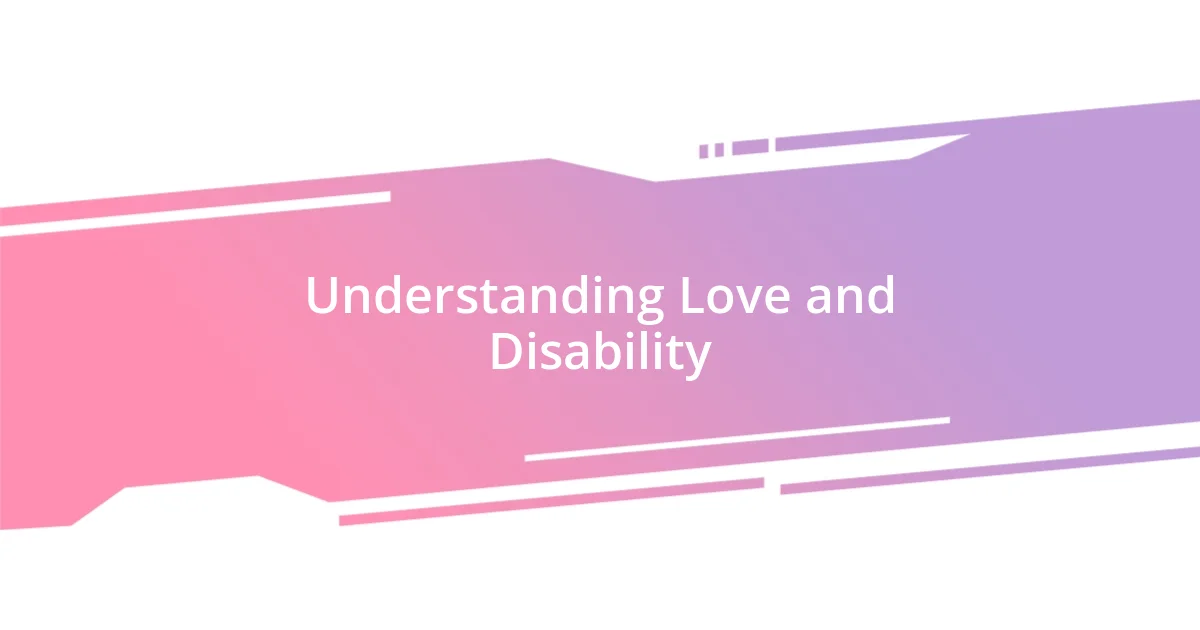
Understanding Love and Disability
Understanding love and disability often reveals layers of connection that many might overlook. I remember a dear friend of mine, who navigated his relationship while living with a mobility challenge. What struck me was how he communicated with such openness about his struggles and joys, making his love story all the more profound.
Love doesn’t have a one-size-fits-all definition, especially in the context of disability. I often find myself pondering: What does it truly mean to love and be loved when societal expectations often don’t see beyond the surface? In my view, it deepens the experience; love can flourish through authenticity, fostering an understanding that transcends physical limitations.
Another poignant aspect is the emotional resilience that often accompanies relationships involving disability. I’ve witnessed couples facing societal scrutiny yet choosing to celebrate their bond fiercely. Doesn’t it inspire you to think about how love can be a powerful catalyst for breaking down barriers and fostering genuine connection?
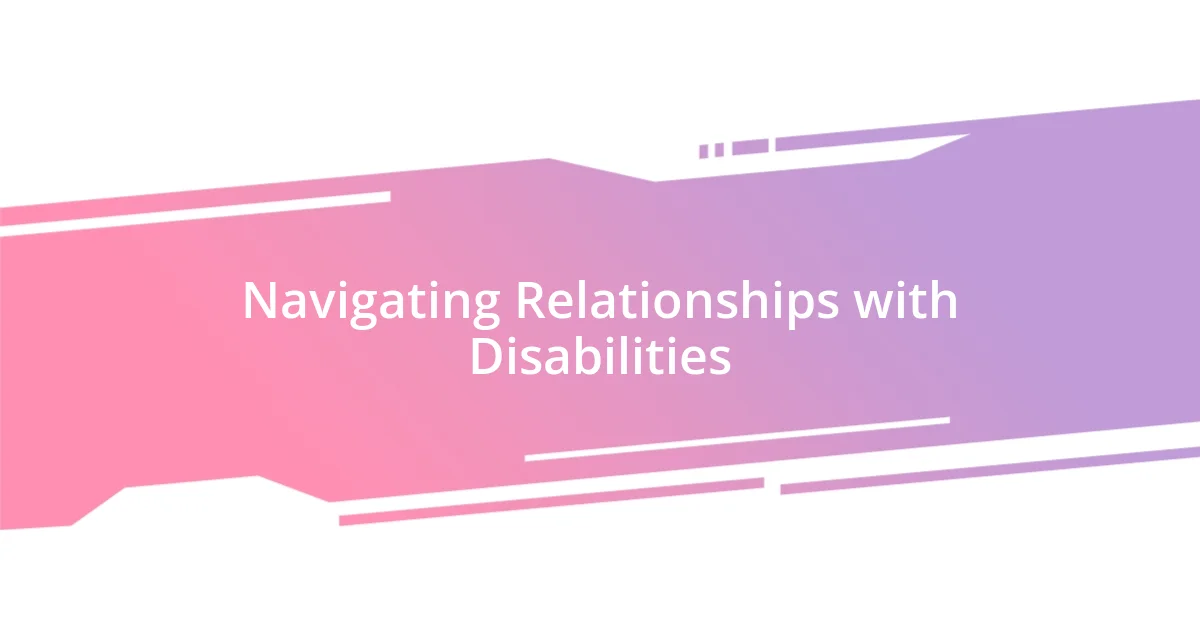
Navigating Relationships with Disabilities
Navigating relationships when disability is part of the equation can be a journey of both challenge and empowerment. I once met a couple who openly embraced their unique experiences—she had a visual impairment, while he struggled with anxiety. Together, they created a safe space where communication thrived, illustrating how understanding each other’s boundaries and emotions strengthens their bond. It’s fascinating to witness how their love flourished by adapting to their individual needs.
The intricacies often lie in the unspoken. A fellow advocate once shared her story about the struggles she faced with dating while living with a chronic illness. The fear of judgment loomed large, yet she found strength by being upfront with her partner from the start. Through shared conversations and mutual support, they discovered the beauty in vulnerability. This honesty not only nurtured their emotional connection but also empowered them both to face external challenges together, proving that openness can truly foster intimacy.
Table conversations also come into play in relationships involving disabilities. I remember engaging in dialogues around accessibility when visiting friends’ homes. Couples had to work together to assess environments, ensuring comfort for both partners. It emphasizes the teamwork aspect—whether it’s advocating for accommodations or finding creative solutions for date nights. Isn’t it inspiring to consider that love, in this context, often requires collaboration and deep understanding to navigate the world together?
| Challenges | Benefits |
|---|---|
| Communication barriers | Strengthened emotional connection |
| Societal perceptions | Empowerment through teamwork |
| Accessibility issues | Deepened trust and understanding |
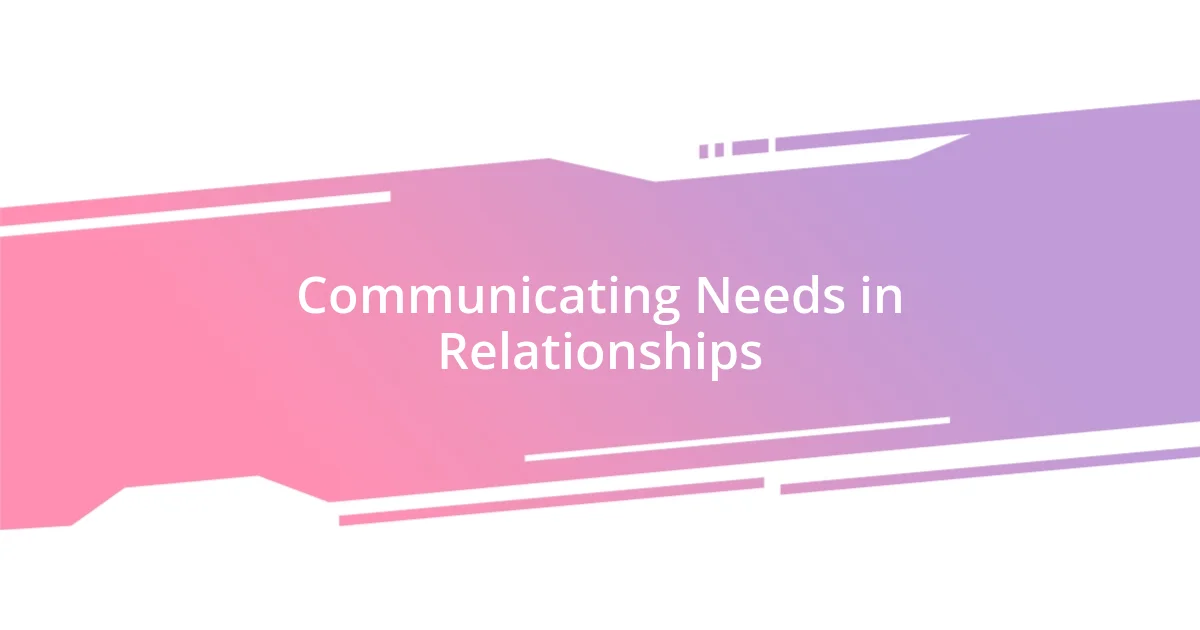
Communicating Needs in Relationships
The essence of communicating needs in relationships, particularly when disability is involved, is about honesty and clarity. I remember a time when a close friend openly expressed his daily challenges with his partner. His courage to speak about what he needed—from emotional support to physical assistance—highlighted how essential it is for couples to have these crucial conversations. I can’t stress enough how amazing it is to see trust grow when each partner feels safe to share their vulnerabilities.
In relationships where disability plays a role, effective communication can often look like this:
- Discuss specific needs openly, whether they are physical or emotional.
- Create a safe space for both partners to express fears or insecurities.
- Use clear language, avoiding assumptions about what the other person understands.
- Encourage regular check-ins about each other’s comfort and feelings.
- Be patient and empathetic when responding to each other’s thoughts.
Each of these points resonates with my experience, reminding me of how meaningful it is for love to be woven together through a shared narrative. By consciously building this communication framework, couples can not only address their needs but also deepen their emotional connection, fostering a resilient partnership.
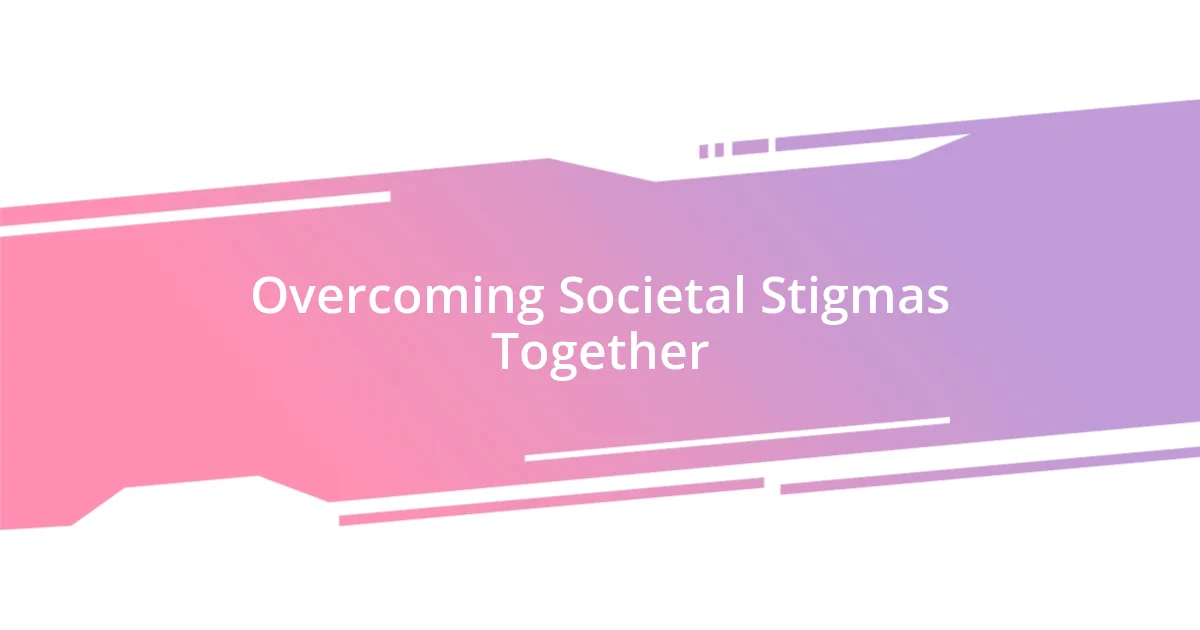
Overcoming Societal Stigmas Together
When I reflect on overcoming societal stigmas as a couple, I think about a friend who navigated the dating world with cerebral palsy. She often shared how societal judgments felt like invisible barriers. It took genuine support from her partner, who stood by her side and faced the scrutiny together. Their alliance demonstrated a beautiful defiance against societal norms; they weren’t just confronting perceptions—they were dismantling them.
One evening, while attending an event focused on disability awareness, I witnessed a couple boldly share their story on stage. They spoke about the challenges they faced not only within their relationship but also from the outside world. I was struck by their vulnerability as they described moments of hurt and confusion, but also unyielding love. It made me wonder, how often do we underestimate the power of two hearts working as one to challenge prejudice? This shared journey reinforced my belief that love can indeed be a powerful combatant against societal stigmas.
Sharing experiences with others who face similar challenges can create an empowering community. I remember joining a support group where individuals exchanged stories about love, acceptance, and societal perceptions. The strength in that room was palpable, and I realized how transformative it can be to know you’re not alone. It’s inspiring to think about how love, paired with shared understanding and collective strength, can illuminate paths through challenging societal landscapes. Isn’t that the essence of true partnership?
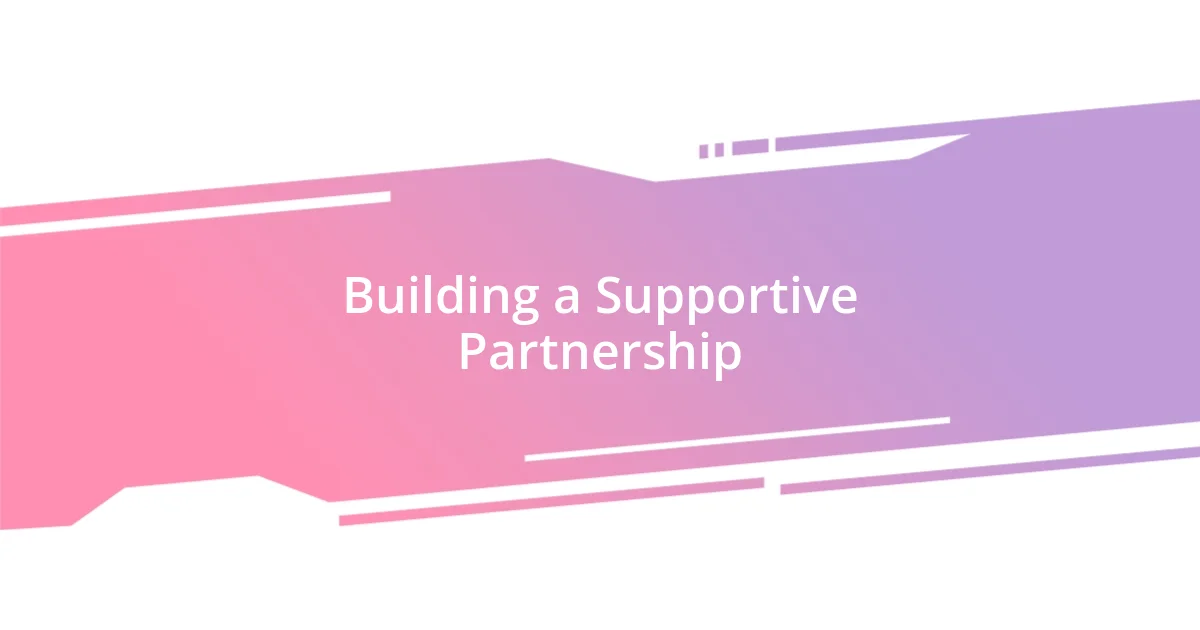
Building a Supportive Partnership
Building a supportive partnership requires both partners to be committed to each other’s growth and well-being. I remember sitting down with my partner during a particularly challenging time when we faced obstacles due to my disability. That moment of vulnerability—sharing fears and aspirations—really solidified our bond and made me realize how important it is to uplift one another through shared goals and mutual encouragement. Have you ever had a moment when you felt completely supported? It’s those moments that create an unshakeable foundation.
It’s crucial to advocate for each other’s needs and celebrate successes, no matter how small they may seem. I often reflect on how our little victories, like completing daily tasks together, strengthened our connection. There were days when just getting out of bed felt monumental, and we made a ritual of celebrating those achievements. How many couples take the time to acknowledge their journey in such a meaningful way? For us, those celebrations reaffirmed our partnership.
Finally, don’t underestimate the power of laughter and joy in a supportive relationship. I recall a weekend when my partner suggested we take a break from routine and just enjoy some time outside—maybe a picnic in the park. Those moments of light-heartedness reminded us that love isn’t just about facing challenges; it’s also about enjoying life’s simple pleasures together. How often do we forget to pause and relish joy amidst our struggles? Building that balance between support and happiness truly enriches the partnership and makes every challenge feel a little lighter.
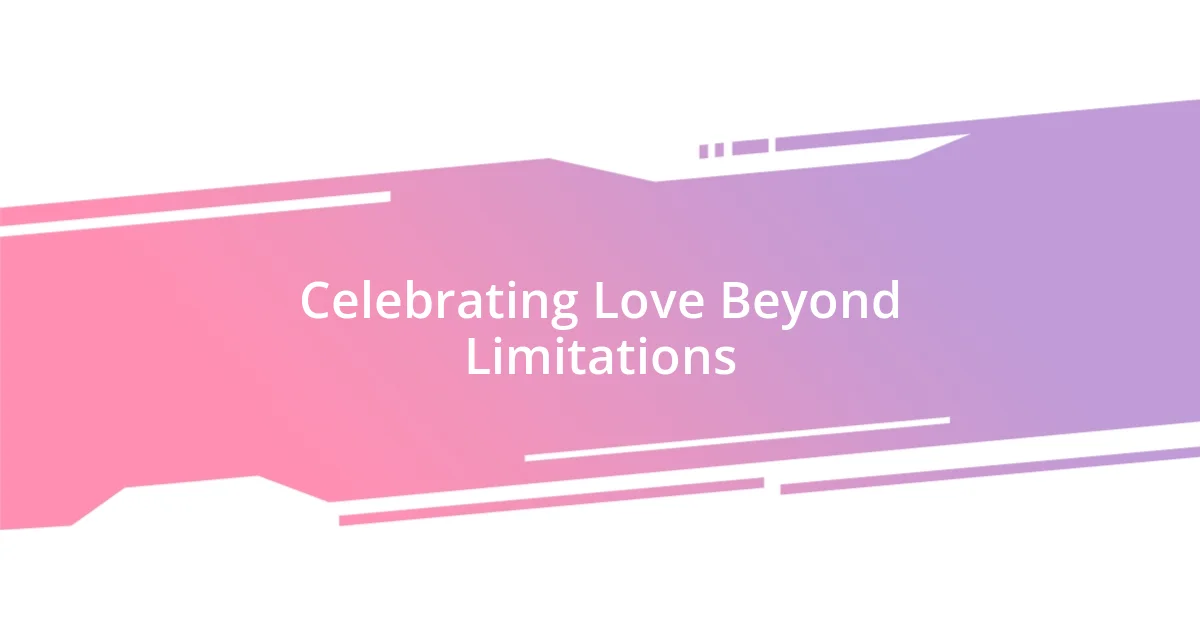
Celebrating Love Beyond Limitations
Love inherently thrives when it’s nurtured beyond the confines of limitations. I recall a beautiful moment when I attended a wedding of a dear friend who uses a wheelchair. Watching her dance with her partner, who lifted her in his arms, was a stunning reminder that love knows no boundaries. It made me think—what if we allowed ourselves to see love’s expansive potential, unencumbered by societal norms?
I’ve noticed that love can also serve as a beacon for those around us, inspiring others to embrace differences. One time, I was at a coffee shop and struck up a conversation with a barista who had previously felt isolated due to her disability. She shared how witnessing couples, like my partner and me, enjoying life together motivated her to believe in her right to love and be loved. This connection brought forth a realization for me—how often do we underestimate the impact our love can have on strangers?
It’s fascinating to see how sharing love stories can elevate conversations around disability. At a local community event, I listened to a couple recounting their journey through both hardship and joy. As they spoke, they illuminated how their relationship not only provided them strength but also inspired many in the audience who faced their own struggles. Reflecting on that day, it struck me that every love story told has the power to break down barriers and foster acceptance. Isn’t it amazing how celebrating love can lead to profound change?
